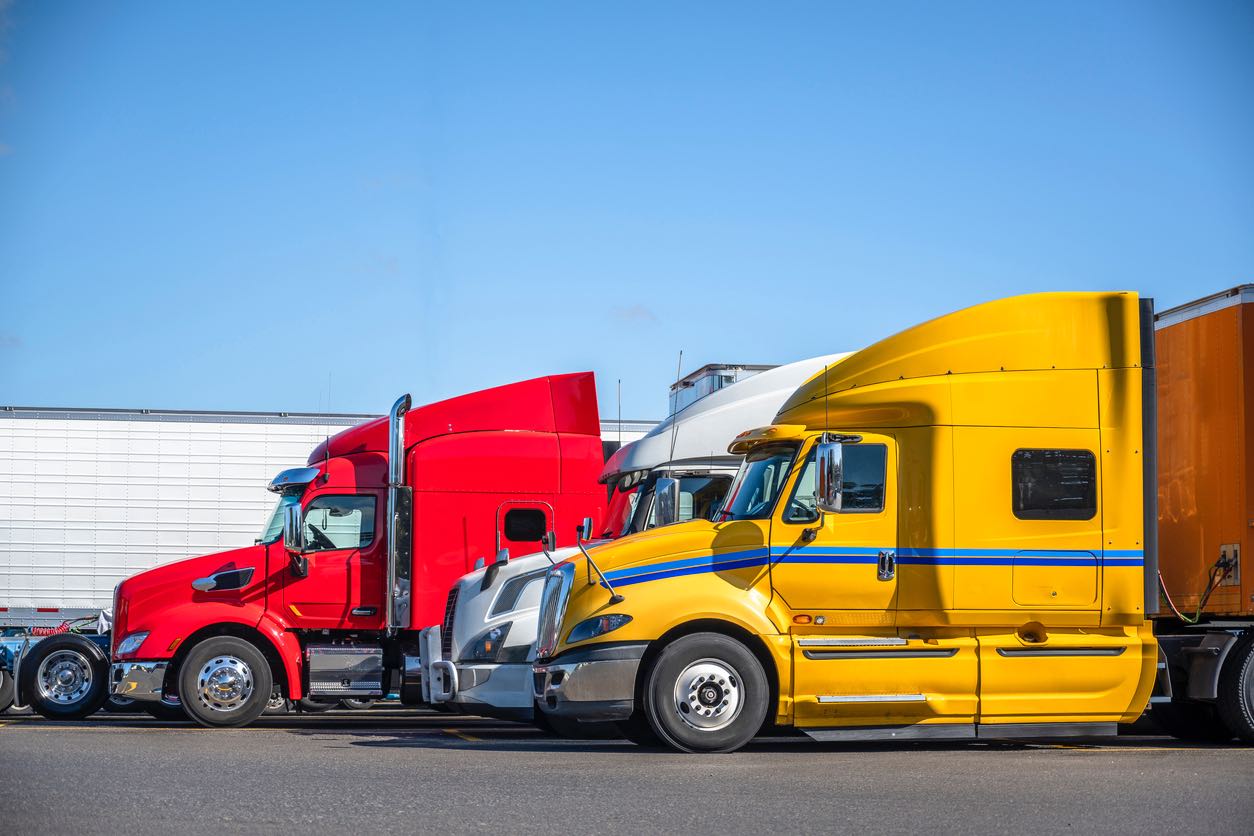Embarking on a State to State Adventure and Simplifying Your Car Shipping Experience
Moving your car to a new state might seem like a challenging conundrum full of unknowns and questions. The truth is, though, that transporting your car to a different state doesn’t have to be difficult or stressful if you prepare ahead of time and have a clear grasp of the steps involved. The goal of this in-depth tutorial is to help you understand the intricacies of interstate vehicle transport so that you may confidently traverse along this path with the knowledge and resources you need. Knowing the ins and outs of auto shipping may greatly improve your moving experience, whether you’re moving for a new job, going to college, or just switching places for a change of scenery.
When shipping your automobile over state lines, there are a number of important factors to take into account, such as choosing the best mode of transportation, getting your car ready for the trip, and being aware of the associated costs. Every one of these components is essential to a successful and effective transport. We go deep into the subject of interstate vehicle shipping in this text to provide you a comprehensive understanding of what to anticipate, how to get ready, and the best practices to adhere to. Our intention is to provide you a clear road map so that you may make decisions that are well-informed, simple, and suited to your individual requirements. Together, we can make the seemingly overwhelming chore of transporting your car to a different state manageable and free of anxiety by starting this journey together.

There are several methods available for moving your car to a new state, each with certain benefits and things to think about. This section explores the several ways to move your automobile to a different state, assisting you in weighing the advantages and disadvantages and coming to a well-informed decision that fits your needs, situation, and budget. Knowing your alternatives is the first step to guaranteeing a smooth and worry-free car transport, regardless of your needs—convenience, affordability, or a customized transport solution.
Using a Car Transport Company: Hiring an expert auto transport company is frequently the most practical way for shipping a car across state lines. These businesses specialize in the safe cross-state transportation of automobiles, guaranteeing that your vehicle reaches its destination unaffected by additional travel miles. To guarantee that your car is safe for the whole trip, use a licensed and insured broker and carrier. Getting several estimates enables you to evaluate services and costs, assisting you in striking a balance between the two.
Driving the Car Yourself: Especially at shorter distances, driving your vehicle yourself to the new state might be a cost-effective option. If you have the time and are comfortable with lengthy travels, this approach might be a fantastic choice since it allows you to have total control over the shipping process. But for longer interstate journeys, it may not be as economical as alternative options due to to the rising costs of fuel, housing, and time.
Employing a Moving Company: If you’re already using their services for home relocation, several moving companies include car transport services in their moving packages, which is a practical alternative. Because it combines your requirements for vehicle transport and relocating with one supplier, this solution may be more effective. To ensure safe automobile transportation, it’s crucial to verify if the moving business is properly equipped and insured. Note: Moving companies are just licensed to transport household goods and will use a car shipping broker to facilitate the transport of your vehicle which usually costs more than just going directly to the car shipping broker yourself.
Connecting a Hitch to a Moving Truck: Using a tow dolly or vehicle trailer to connect your automobile to the rear of a moving truck that you’re renting might be a practical relocation strategy. Although this strategy might save money, it does need a certain level of confidence when driving a larger vehicle while towing your automobile. Make sure the rental company approves of this arrangement and supplies the required tools. Driving a truck with a towed vehicle has additional challenges and potential safety concerns that should be understood.
Employing a Skilled Driver: By choosing a professional driving service, you may hire a skilled driver to drive your automobile to its destination. Although this individualized service may cost extra, it provides the convenience of having your car delivered but remember your vehicle will be delivered to you with a significantly higher mileage count. If you are unable to drive long distances or would prefer not to, this is a good alternative. For peace of mind, be sure the driver has been verified and that the trip is insured.
Transportation via Train or Boat: Train and boat vehicle transportation is a specialized approach that is useful for moves along specified routes or to places like Hawaii or Alaska. For example, Amtrak’s Auto Train provides a special way to move cars around the East Coast. Boat shipping is mostly used for relocations abroad or to non-contiguous states, while it is also a possibility for certain domestic transfers. The aforementioned methods may be more affordable and effective, but they might only be available in certain areas and have limited availability.
In the end, choosing the best auto transport solution necessitates taking your move’s particulars, cost, distance, and comfort level into account. Being aware of your alternatives will enable you to choose the one that best meets your needs, making the process of moving your car less stressful and more enjoyable.

To ensure the safety of your automobile and prevent any glitches during transit, planning is essential when shipping it to a different state. Though it might be simple, getting your car ready requires careful attention to detail. Make sure your car’s gasoline tank is exactly the proper amount of full, preferably no more than a quarter of the way full. This lessens the weight of the car and lowers the safety hazards. Next, give your car a complete cleaning and inspection. Taking pictures or recording pre-existing damage with a camera gives a clear record that may be very helpful if there are any disagreements about the state of the vehicle when it is delivered.
Furthermore, before shipping, personal belongings and valuables should be taken out of the automobile. Not only is this a need for the majority of shipping companies, but it’s also a safety measure against damage or loss. Remember that most insurance policies offered by auto transport companies do not cover personal items left inside the car. Additionally, make sure the tires on your automobile are in good shape and are well inflated. Delays in loading and unloading can be avoided with properly maintained tires. Additionally, the car’s battery has to be completely charged and fastened because a dead or loose battery might pose issues when being transported.
Check the Fuel Level: The gasoline tank should not be more than one fourth full at any time. This decreases the overall weight of the item and the hazards associated with transporting it.
Take Out Any Personal Belongings: You should remove all of your personal items from your vehicle. Considering that the items in question are not covered by the insurance of the carrier, this lowers the likelihood that they will be stolen or damaged.
Vehicle Condition and Pre-existing Damage Should be Documented: From a variety of vantage points, take comprehensive photographs or videos of your vehicle. This documentation serves as proof in the event that any additional damage occurs while the item is in transit.
Examine the Tires: You should check that the tires are properly inflated and in excellent condition. A seamless loading and unloading process is made possible as a result of this.
Examine the Battery: It is necessary to have a battery that is completely charged and firmly attached in order to avoid any problems during transportation.
In addition to ensuring the safety of your car, the actions that are taken in preparation contribute to the smooth operation of the shipping process. Because proper preparation requires only a short amount of time, it may save you a significant amount of trouble and potential disputes, so ensuring that your experience of transporting your vehicle is as smooth as it can possibly be.

When preparing for an interstate move, it is essential to know how much shipping an automobile would cost. The total cost varies depending on a number of important aspects rather than being a fixed amount. These consist of the weight and size of the vehicle, the distance to be moved, and the mode of transportation you choose. For instance, because of their size, weight, and increased need for room and fuel, bigger cars like SUVs and trucks often cost more to ship. Similar to this, costs increase with distance, with cross-country transportation costing more than interstate movements that are shorter in length.
The time of year has a big impact on the price as well. Due to increased demand, auto transport is a seasonal business, with costs often reaching their highest in the summer. On the other hand, as there is less of a need for these services in the winter, you could get cheaper prices. When organizing your relocation, it’s critical to take this seasonal difference into account as it may result in significant savings.
Selecting a Carrier: The cost is mostly determined by the kind of carrier you select. Compared to enclosed carriers, open-air carriers are more cost-effective. Open-air transportation is a popular option since it’s less expensive, but it does expose your car to the elements and the weather.
Dimensions and Weight of the Vehicle: The cost of transportation will increase with the size and weight of your car. This is due to the fact that larger cars require more room and weight overall, which lowers fuel efficiency.
Distance of Shipping: The farther your automobile needs to be delivered, the more expensive it becomes. Longer routes can cost more since they take more fuel and sometimes more time.
Variations According to the Season: All year long, prices fluctuate, with summertime often seeing the highest prices. If your schedule is flexible, you may be able to save money by shipping during off-peak seasons.
You may more accurately predict the expenses associated with car transport and make selections that suit both your needs and budget by taking these aspects into account. Keep in mind that getting estimates from a couple of the best auto transport companies will help you choose the best possible offer for your particular circumstances and give you a better idea of what to expect in terms of expenses. In addition to ensuring a more seamless shipping experience, careful planning and comprehension of the cost dynamics in vehicle transport can result in substantial savings.

One of the most important choices you’ll have to make when determining how to ship your automobile to another state is whether to choose covered or open-air transportation. Your considerations with regard to cost, security, and the kind of car being transported will determine how you make this decision.
The main reason open-air transportation is so well-liked is its low cost. It is more cost-effective than covered transportation and works with the majority of regular cars. The automobiles are transported on large carriers that can hold many vehicles at once and have two floors. Although this option is less expensive, it exposes your car to the elements and road debris while it is being transported. If your vehicle will be going long miles or through regions with variable weather, this is something you should definitely take into account.
Cost-effectiveness: When transporting an ordinary car, open-air transportation makes sense because it’s typically less expensive than enclosed transportation.
Vehicle Visibility: With open-air transport, your car is visible to the carrier during the journey, allowing for easier monitoring of its condition.
Element Exposure: Although it’s less expensive, this approach exposes your car to the elements and flying road materials, so it might not be the best choice for many kinds of automobiles.
In contrast, your car is better protected when it is transported in an enclosed space. To protect it from the weather and any risks on the road, your automobile is transported in a completely covered trailer. For high-value automobiles, such as brand new cars, luxury cars, vintage models, or exotic sports cars, this approach is especially advised. Even though covered transportation is more expensive, it may be worth it to save emotional or precious automobiles from potential harm.
Enhanced Protection: When your car is transported in an enclosed space, it is more protected from the elements and from flying and falling objects from the road.
Perfect for Luxury Cars: This transportation option is especially advised for brand new, expensive, vintage, or luxury automobiles that need special handling.
Increased Cost: Enclosed transport is more expensive than open transportation, but it provides superior protection because of the added security and lower danger of damage.
To sum up, the decision you make between open-air vs covered transportation should take into account both your unique requirements and the car’s worth. Open-air transportation for daily automobiles strikes a compromise between price and effectiveness. Enclosed transport may be the better option, though, if you’re shipping expensive cars or just want additional peace of mind. Making this choice will affect more than simply transporting your automobile over state borders; it will also affect its safety and preservation.

A safe and stress-free transport experience depends on handling the documentation and insurance requirements of vehicle shipment. It’s crucial to confirm a vehicle shipping company’s insurance coverage before signing any formal agreements. This is your safety net against unanticipated events, not simply a formality. A proof of insurance that outlines the scope of coverage, including loss and damage sustained during transit, should be provided by any respectable vehicle transport company. It’s also critical to comprehend the coverage’s restrictions because there can be a cap on the quantity of claims that can be made or specific sorts of losses that it won’t cover.
Reviewing your personal vehicle insurance coverage is a good idea as well. Your personal auto insurance may occasionally provide extra coverage for interstate transportation, giving your car an additional degree of security. Consider getting additional insurance for valuable vehicles, such as luxury automobiles or antiques. This extra coverage might provide comfort, particularly for vehicles with significant emotional or financial worth. Keep in mind that even while additional insurance may appear expensive, the safety it provides is priceless, particularly when shipping expensive cars.
Key Documentation for Car Shipping:
The Bill of Lading: This important document functions as both a contract and a receipt. It is a vital document for any damage claims as it details the state of your car at the time of pickup and delivery. Before signing, be sure that the carrier and you both agree on the condition of the vehicle as stated in the bill of lading.
Terms & Conditions of Insurance: It is essential to comprehend the insurance policy of the transporter. Recognize what is and is not covered. Inquire about coverage limitations, deductibles, and the procedure for submitting a claim in the event of damage.
Extra Protection from Personal Insurance: It may be required to obtain supplemental insurance for automobiles that are extremely valuable. This might offer a greater degree of coverage, guaranteeing that the transport process will adequately safeguard your investment.
Investing the necessary effort to fully comprehend and organize the necessary insurance and documentation will greatly improve the safety and dependability of your car’s journey. This step guarantees a clear and reliable transportation process in addition to protecting your car.

To sum up, there are a few important things that need to be carefully considered in order to transport your car to another state effectively. These include weighing the pros and cons of cost, convenience, and safety as well as selecting the best mode of transportation for your individual requirements. Comprehending the diverse transportation alternatives and suitably readying your car are essential measures to guarantee a seamless and anxiety-free voyage for your vehicle. Although the entire process may initially appear difficult, state-to-state auto transport may be a simple and safe experience with the right preparation and understanding.
Ship A Car, Inc. is a dominant player in the auto shipping industry when it comes to selecting a trustworthy service that serves the whole United States, including Hawaii and Alaska. They have made a name for themselves in the vehicle transportation industry as an honest partner after more than twelve years of devoted service. Whether you’re shipping a luxury automobile, a family sedan, or even a heavy-duty vehicle, their extensive variety of services ensures that all of your needs are handled with skill and care. The company’s A+ rating from the Better Business Bureau and the amount of favorable reviews they have earned on multiple platforms are testaments to their dedication to providing high-quality auto transport service.
Selecting Ship A Car, Inc. for your car shipping requirements is a decision that will give you peace of mind. Their skilled team of experts is prepared to manage the details of your car’s travel, guaranteeing a smooth and effective relocation process. Their vast network and in-depth knowledge of the subtleties of interstate auto shipping enable them to provide you a hassle-free service. Give Ship A Car a call if you’re seeking for a dependable, effective, and customer-focused auto shipping service to start your journey toward a worry-free auto transport experience. You may be confident that your car is in good hands because of their dedication to quality and client happiness.
Q: What’s the most economical option for interstate car shipping?
A: Taking the wheel of the car oneself is frequently the option that is the most cost-effective. On the other hand, if you are thinking about hiring a professional service, the most cost-effective alternative is normally to go with open-air transportation.
Q: What is the expected duration for shipping a car to a different state?
A: It is possible for the amount of time needed for shipment to change based on the distance that has to be traveled, the mode of transportation that is selected, and the schedule of the carrier. It is in your best interest to communicate with the shipping provider in order to obtain an approximate shipment timeline.
Q: What steps should I take upon receiving my vehicle after shipping?
A: At the time of delivery, it is essential to perform a comprehensive inspection of your car to identify any new damages and to evaluate its condition in comparison to the bill of lading. In addition, you should give the car a brief test drive in order to identify any urgent technical difficulties. After that, you should complete the entire process by settling any outstanding payments with the driver or the shipping company.
Q: Are there any restrictions on the types of vehicles that can be shipped?
A: Vehicles of all kinds, including automobiles, trucks, sport utility vehicles (SUVs), motorcycles, and even historic or luxury automobiles, may be transported by the majority of auto transport companies. On the other hand, there may be limitations or specific requirements for cars that are too large or that have been modified. At all times, it is in your best interest to inquire with the transportation provider about any particular vehicle needs or limits.
Q: What should I do to prepare my car for shipping?
A: The process of getting your vehicle ready for transport involves a number of important steps, including making sure that the gas tank is only a quarter full, removing all of your personal belongings and valuables, turning off any alarms, ensuring that the tires are properly inflated and that the battery is charged, and documenting the current condition of the vehicle with photographs for future reference. The preparation helps to ensure that loading and unloading go smoothly, and it also safeguards your car while it is in transportation.




